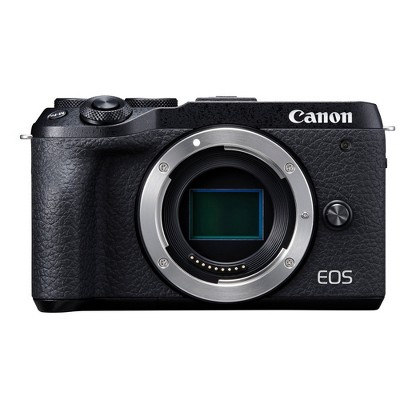Sony Alpha 9 II Mirrorless Full Frame Interchangeable-Lens Camera (Body Only)

Similar Products
Products of same category from the store
AllProduct info
The Sony Alpha 9 II Camera is built on the impressive legacy of the original Alpha 9, maintaining groundbreaking speed performance, including blackout-free continuous shooting at up to 20 frames per second with Auto Focus and Auto Exposure tracking at 60 calculations per second. Updates include significantly enhanced connectivity and file delivery, continuous shooting at up to 10 fps with mechanical shutter, and evolved AF performance with newly optimized algorithms, re-designed build to enhance durability and operability. 24.2MP Stacked Exmor RS CMOS Sensor From the world’s largest sensor manufacturer comes the fastest 35mm full-frame 24.2 MP stacked Exmor RS CMOS sensor, which includes several features that contribute to incredible high-speed performance and outstanding image quality. Separate circuit and pixel layers allow for a significant increase in processing speed for the large volume of data that can also be temporarily stored in internal memory, contributing to a substantial increase in overall pixel readout speed. The combination of this advanced sensor and evolved BIONZ X processing enables blackout-free continuous shooting at up to 20 fps with up to 60 AF/AE tracking calculations per second3, silent vibration-free electronic shutter speeds up to 1/32000 sec, Anti-Distortion Shutter operation, and other capabilities that add up to unprecedented speed from a full-frame camera without interference from mechanical devices. BIONZ X Delivers Low Noise at High ISO The Alpha 9 II achieves high sensitivity of ISO 100-51200 expandable to ISO 50-204800 (not expandable for movie) for low-light performance thanks to the back-illuminated structure and Nano coating on the gapless on-chip lens architecture. The latest BIONZ X image-processing algorithm reduces noise in the medium-to-high sensitivity range while enhancing subjective resolution and image quality. Advances in Sony’s Detail Reproduction Technology achieve even finer reproduction of subject details for realistic rendering of physical textures. Area-specific Noise Reduction has also been improved so that better resolution is realized in dark areas and noise granularity is controlled for maximum image quality at high sensitivities. The algorithm also prevents AWB variations when shooting continuous bursts, for more consistent images. More consistent image quality is ensured in situations where lighting varies, such as sports or weddings. Built-In 1000BASE-T Ethernet Terminal The Alpha 9 II includes a built-in 1000BASE-T Ethernet terminal, enabling gigabit communication for high-speed, stable data transfer operations. Additionally, File Transfer over SSL or TLS encryption (FTPS) is supported for increased data security and PC remote (tether) shooting performance is improved, with decreased release time lag and reduced live view screen delay when using the Remote Camera Tool desktop application. The speed of the camera’s built-in wireless LAN functionality has also been increased, adding a stable and fast 5 GHz (IEEE 802.11ac) band, in addition to the 2.4 GHz provided in the Alpha 9. IEEE 802.11a/b/g/n/ac standards are all supported. Voice Memo Designed to improve the speed of news agencies’ workflow, the Alpha 9 II features a new Voice Memo function that allows spoken information to be attached to images in the form of voice memos that can be replayed when the images are reviewed. The voice data can also be included with images sent to an editor, giving them important information needed for effective editing. Alternatively, a field photographer can also use the Transfer and Tagging add-on Imaging Edge application to transfer voice tags with the images to their mobile device and have the voice memos automatically converted to text and added to the JPEG images in the form of IPTC metadata. All of this can be done automatically or manually selected by the photographer.
Price History
Price Archive shows prices from various stores, lets you see history and find the cheapest. There is no actual sale on the website. For all support, inquiry and suggestion messagescommunication@pricearchive.us




















